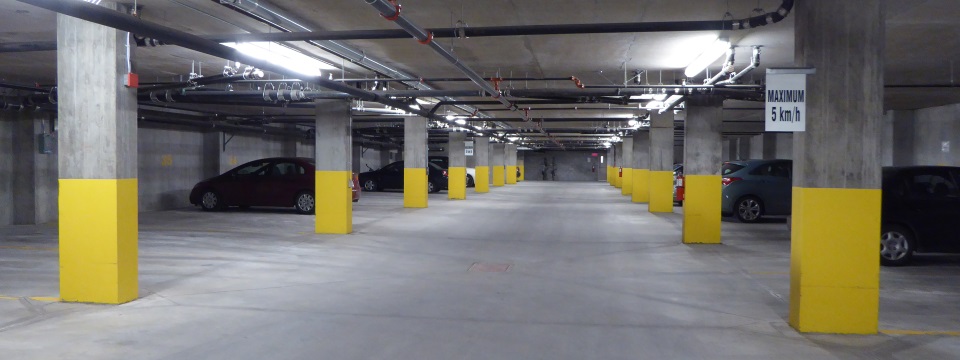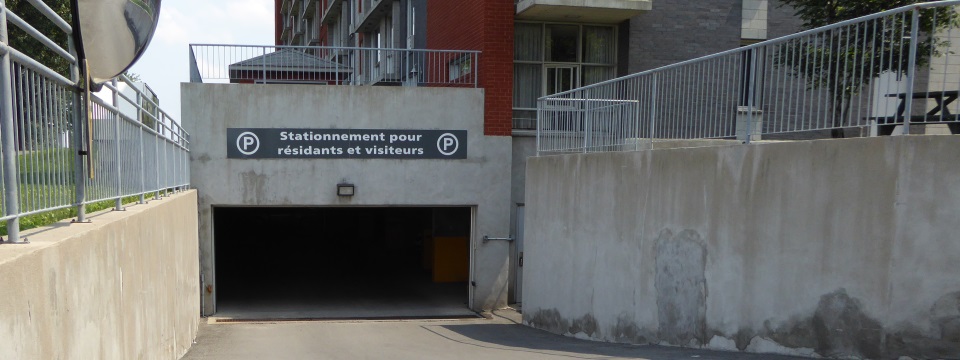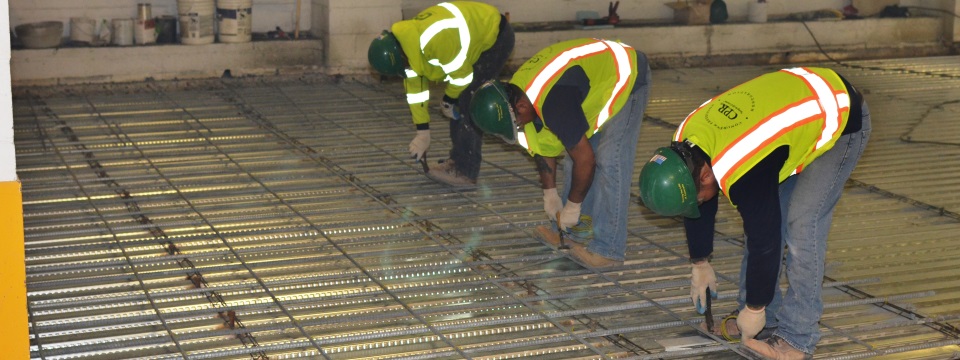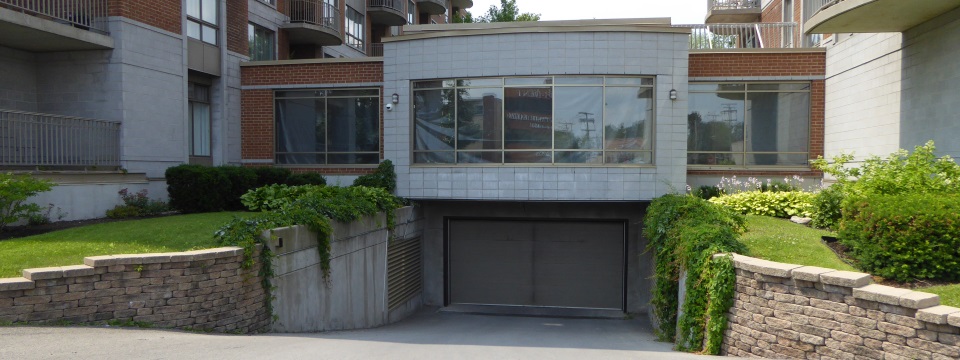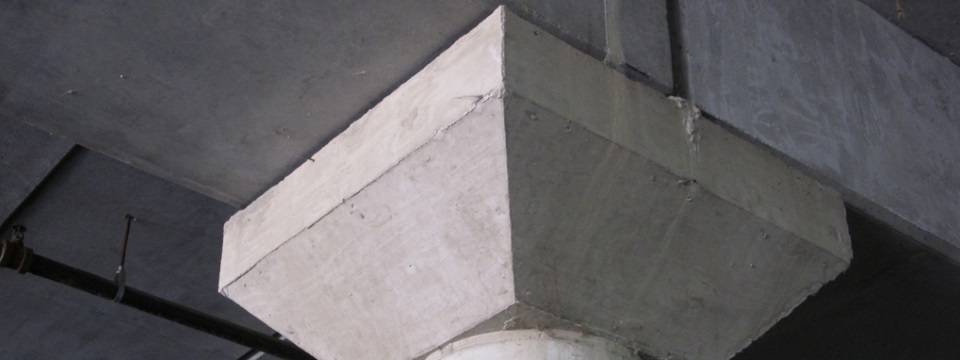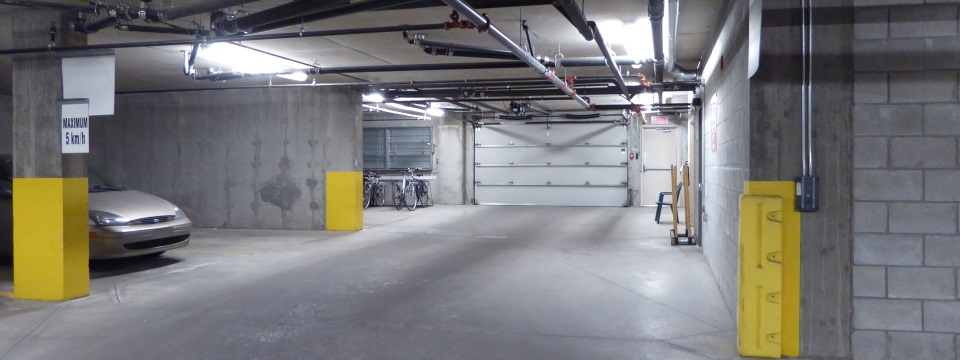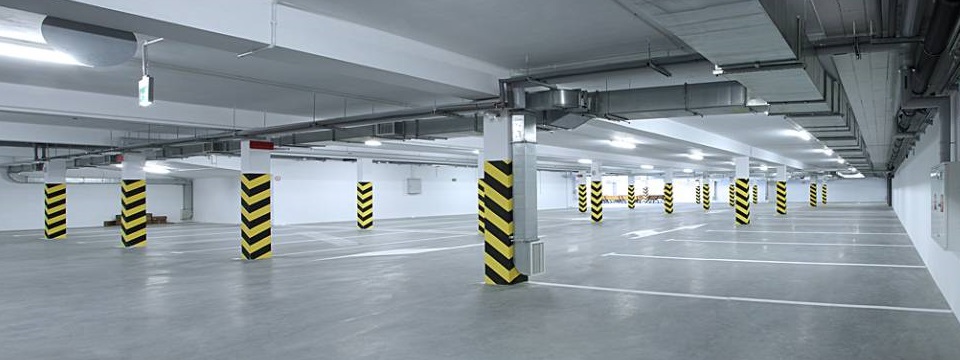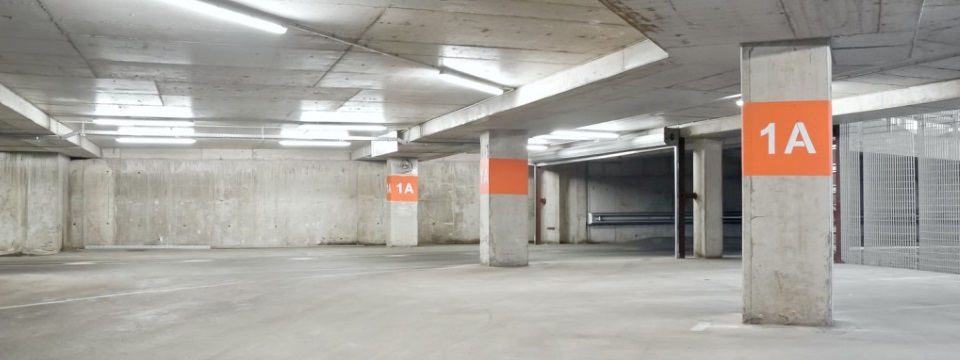PARKING GARAGES MAINTENANCE & INSPECTION BILL 122 IN MONTREAL BY AN ENGINEER
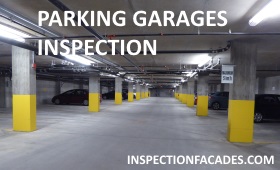
Inspection of parking garages, according to Bill 122, is only reserved for engineer members of the OIQ (l’Ordre des Ingénieurs du Québec). The inspectionfacades.com group, based in Montreal, brings together experienced engineers who are specially trained to conduct inspections of multi-floored parking garages. All 5-storey buildings and more, with multi-floored underground or above-ground parking garages with structural slabs should be inspected every 5 years by an engineer who, in turn, should submit a parking spaces inspection report. Buildings with dangerous structural problems must be inspected immediately without waiting 5 years and should be accompanied by a repair action plan. The following information is intended to explain in a simple and clear way what exactly are inspections of parking spaces in terms of goals and objectives, work plan and report, standards, inspection techniques, consequences and cost of a good inspection plan and maintenance program of multi-floored parking garages in the Province of Quebec. By popularizing the information it becomes more accessible for the owners who will better understand the issues and who will be able to provide maintenance plans and prevent incidents. Inspectionfacades.com is at the service of building owners, to inform them first, put into place inspection and maintenance programs, conduct inspections and write reports and ultimately extend the life of their parking spaces in order to reduce costs.
First, let’s make a brief historical overview of the reasons for applying Bill 122, aiming at the obligation by owners of buildings of 5 floors and more to have inspections conducted of their multi-floored parking spaces by an engineer member of the OIQ.
HISTORICAL OVERVIEW OF Bill 122 CONCERNING THE INSPECTION OF MULTI-FLOORED PARKING GARAGES
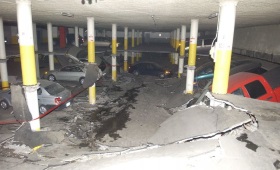
As is too often the case in the application of laws and regulations Bill 122 was introduced following incidents in 2005 and 2008 in the parking spaces collapses in Quebec, and finally in 2009 causing death when a panel fell from a building’s façade in Montreal. Let’s specify these events: in July 2005 the collapse of a parking space in Sept-Îles was victimless but in November 2008 the collapse of the parking space in Deguire Street in Ville St-Laurent caused the death of a person. Then, in July 2009, on Peel Street in Montreal a panel detached itself from the façade on the 18th floor and would mortally wound a lady sitting in a restaurant on a sidewalk terrace.
With the Building Safety Code, which was already existing, a Draft Regulation, which was published in the Gazette officielle du Québec on January 16, 2013, 145th year, no. 3. See Part 2, Section IV, Articles 371-384, which entered into force on 18 March 2013, was introduced, following the recommendations of the coroners. The regulations concerning parking spaces, are found in Articles 386 to 400 and in Appendix 1 (which is a help sheet for property owners). In the regulations there is the obligation of the owners of 5-storey buildings and more to conduct two types of inspections for their parking spaces including an annual one, not necessarily by an engineer, and another one every 5 years, necessarily conducted by an engineer.
From a more technical point of view, all these parking spaces where there had been incidents were related to problems with round columns, steel frames and with punches effects at the level of the columns.
Concrete problems SUMMARY OF PARKING GARAGE SPACES’ TECHNICAL PROBLEMS IN QUEBEC
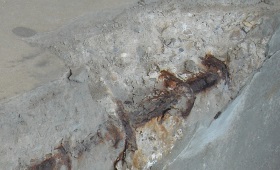
The main cause of parking spaces’ problems stems from the extreme corrosion of the reinforcing steel around the columns of parking spaces. Corrosion attacks the steel framework bars inside the concrete, which have their effective steel sections reduced and therefore the resistance of the slab is weakened. Corrosion also causes swelling of the steel having the effect of delamination of the concrete and thus a major deterioration of the slab. Causing the punches effect at the level of the columns which are no longer able to hold the slabs they must bear.
GOALS AND REQUIREMENTS OF THE REGULATIONS AND OF Bill 122 CONCERNING PARKING GARAGES
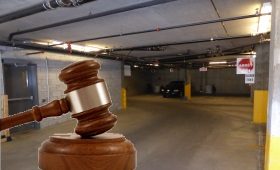
The safety of the inhabitants and the public in parking garage spaces and concerning façades is the first purpose of Bill 122. In Quebec there already has been for a long time a Building Safety Code. The new Bill 122 has been incorporated in it and in order to get there it stipulates in it the requirements which have a primarily preventive goal and then how to act in dangerous situations. These requirements are therefore of two types:
- Prevent the development of hazardous conditions by proper maintenance ;
- When it is too late and dangerous conditions are detected, certain procedures and obligations must be put into place by the owner and the engineer, such as:
- The owner must :
- Implement, without delay, emergency measures to ensure the safety of the users and the public ;
- Notify the Régie, the RBQ, without delay ;
- Provide in writing to the RBQ, within 30 days, a description prepared by the engineer of the corrective work to be done to eliminate the hazardous condition as well as, for approval, a work schedule of the corrective work to be done ;
- Ensure that the work is carried out according to the description, the planning and the above schedule ;
- Obtain, at the end of the works, a verification report confirming the safe nature of the parking space ;
- Send, to the RBQ board, a letter signed by the authorized engineer, confirming that all corrective work has been completed to his satisfaction and that there are no hazardous conditions anymore ;
- The engineer must :
- Inform the owner and the RBQ board ;
- Mention the emergency measures put into place or to be put into place without delay to eliminate these dangerous conditions.
- Frequent annual verifications (not necessarily done by an engineer) and every 5 years(must be done by an engineer) ;
- The keeping of a register for each parking space, including :
- The details of the owner ;
- As-built blueprints, photos and all documents or technical information relating to the modifications implemented ;
- Description of repair or modification works carried out ;
- All annual verification reports and any problems identified ;
- All comprehensive verification reports every 5 years.
- The file filled with the model provided in Appendix 1 of the regulations ;
- The dated pictures showing the reported conditions.
- It should be written every 5 years OR following any event that may affect its structural behaviour ;
- Be written by an engineer ;
- Specify that no hazardous condition is present ;
- Provide recommendations to correct the defects ;
- A verification of the components must be done (condition of the concrete, the columns, cracks, beams, drains, expansion joints of the slabs, slab membranes, slab types: prefabricated slabs, hollow slabs in pre-tension, post-tension slabs, flat slab with columns or slabs with abacus and columns, waffle slabs, beam and slab, the type of standard used steel, epoxy coated or galvanized, composites such as carbon fiber, glass or nylon, thickness of the concrete, blueprint and position of the steel reinforcement in the concrete, sealant ...) ;
- The engineer is responsible for the choice of methods and any test, verification or necessary testing ;
- The owner must give access to the premises and provide to the engineer the construction plans, specifications and other relevant documents, including reports on soils and foundations, annual verification reports and previous comprehensive verification reports ;
- The writing of the report must be done within 6 months from the date of the necessary verifications ;
- Presentation of the first comprehensive verification report based upon the year of submission of building plans for permits. Which is very different from the year of the end of construction. The report delivery deadlines are :
- For any construction for which construction plans were submitted after 2012 one must present a comprehensive verification report at the latest within 12 to 18 months after the submission of the blueprints. This means that, for large projects that last several months and years, the construction plans have been submitted for obtaining permits in the beginning. A situation may occur that the construction will not be completed and it will be necessary to call upon an engineer to write the first report. Normally, in practice, in this case, it will surely be the engineering firm that made the plans and manages the work site that will handle the report ;
- For construction done between 2008 and 2012 - The first report must be written no later than 18 March 2014 ;
- For a building constructed before 2008 - The first report must be written no later than 18 March 2016 ;
- The following in-depth reports will be written by an engineer every 5 years.
- ACI_228.2R-13 : Report on Nondestructuve Test Methods for Evaluation of Concrete in Structures ;
- ACI_364.1R-07 : Guide for Evaluation of Concrete Structures before Rehabilitation ;
- ACI_562-13 : Code Requirements for Evaluation, Repair, and Rehabilitation of Concrete Buildings and Commentary ;
- CAN/CSA-S413-94 (2007): Standard for the design of new structures, specifically for parking garage spaces.
- The name, signature, business contact information of the engineer ;
- A description of the mandate, of the review of documents, of observation methods used and of the scope of the verification ;
- Information on the parking spaces, including location, age, size, manner of construction and bearing capacity ;
- The date of the verification work ;
- The results of the verification of all structural elements of the parking spaces being assessed, in particular the characteristics of the concrete, the state of the corrosion activity of the reinforcement framework and the description of defects that may contribute to the development of dangerous conditions and their causes ;
- The location of the defects identified during the verification ;
- Description of the corrective work to be done so that the parking spaces remain safe and the recommended schedule for its implementation ;
- A summary of the report confirming that the car parking spaces have no dangerous condition and, if applicable, that the recommendations were addressed to the owner to correct the found defects that may contribute to the development of hazardous conditions ;
- Appendices for the photos, drawings and any other relevant information obtained during the comprehensive verification and they complete the report.
- An analysis of the existing documents and information available ;
- Visual inspection of the structural slab, beams and columns ;
- Survey of the structural slab with a chain or other equipment. This by compulsory hammering the surfaces completely, a 100%, with a metal chain, mason hammer or metal bar for ceilings. Unlike 25% as with the ASTM standard, for the façade inspection program ;
- Record of cracks in the structural slab ;
- Record of deteriorated concrete areas ;
- Survey of the state of the membrane (wear, cracks and peeling) ;
- Establishing a survey plan.
- Collecting a sampling of concrete in the structural slab comprising :
- A minimum of 6 carrots ;
- Including 2 carrots in the sound concrete ;
- Carrots harvested in problem areas.
- Visual inspection of the concrete samples ;
- Visual inspection of the boreholes ;
- Record of the potential. If when hammering we see chipping of and it seems that the concrete is damaged, then we can make a statement of potential to see the amount of chloride in the concrete and the corrosion in the metal frame ;
- Physical analysis of the concrete samples in the laboratory :
- Compression test ;
- Petrographic analysis - visual analysis of the concrete ;
- RAG alkali-aggregate reaction also called alkali-silica RAS. Due to the stone component of concrete as silica stone that creates multi polygonal deformations ;
- Corrosion of the reinforcing steel that creates orthogonal deformations, in grid ;
- Chemical analysis in the laboratory of the concrete samples of 3 types :
- Contamination with concrete chloride ions. Which causes the corrosion and this depending on the acceptable rate ;
- Carbonation which also leads to corrosion but different from the chloride one. As is often the case with CO² in the atmosphere from vehicles contaminating the top of exterior balconies, it is flaking the concrete and exposes the reinforcement. More present in Europe with the heat, but less frequent in Canada. There are in some cases means for treatment of carbonation without demolition ;
- Sulphate contamination. Like pyrite in concrete. This is an aggregate in concrete which decomposes in the presence of moisture.
- GEO radar Report for detecting the steel reinforcement, the ducts, the delamination and other defects of the concrete ;
- Location of the steel reinforcement frame. Used to set up a reinforcement program of the columns with carbon fiber in order to identify the position of the fittings to secure anchors to fix the carbon fiber ;
- Checking the drainage.
- Observations, including :
- Visual observations; and
- The results of chemical and physical analyses of concrete samples, report on the potential and/or of the GEO RADAR.
- Comments :
- Identification of the concrete’s pathologies ;
- Global analysis of the structural cracking; and
- Verification of the extent of the delaminated areas in %.
- Findings :
- Drafting of the expert report ;
- Nature of the recommended interventions.
- Avoid, as required by Bill 122, the occurrence of dangerous conditions, which is the minimum requirement ;
- In addition, to offer the customer the list of maintenance operations to avoid significant degradation of elements of the multi-floored parking space. This is to avoid excessive costs for repair of the real-estate stock in the future and not to affect its profitability. Because there is a cost factor of 10/1 between the maintenance and replacement of a slab.
- Inspection ;
- Recommendations ;
- Plans and specifications ;
- Work site monitoring.
ENGINEERING REGISTRY FOR EACH PARKING GARAGE SPACE IN QUEBEC ACCORDING TO Bill 122

The life span of parking spaces is far from being eternal. Parking space conditions change over time, they have a life span that varies depending on their use and maintenance. Especially in Quebec, with large variations in climate that involve the use of salt and other minerals that are transported by vehicles, which leave them on the concrete floors of parking spaces and which attack the concrete and the reinforcements inside of them which compose them.
That said, it is necessary to know the history of the parking spaces’ condition to learn more about their profile, to facilitate their diagnosing of possible problems to come and get to a response and maintenance plan. In the same way that a patient who visits a doctor has a file of his health condition in time. For this reason, Bill 122 requires:
FEATURES AND CONTENT OF THE ANNUAL VERIFICATION REPORT OF THE PARKING GARAGE SPACE BY THE OWNER
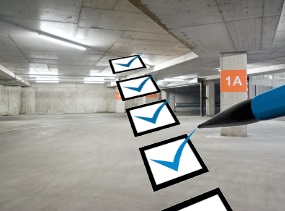
The owner can himself do the annual verification of his parking space or with whom he wants, the manager or someone else. However, he must make sure to archive all his annual reports in a register indicating the material condition of his parking spaces. The annual verification report will contain :
FEATURES OF THE COMPREHENSIVE VERIFICATION REPORT EVERY 5 YEARS OF PARKING GARAGE SPACES BY AN ENGINEER
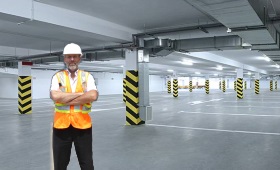
The verification report written by an engineer is more comprehensive and requires detailed knowledge of construction, concrete, reinforcing steel, concrete contamination, repair methods of the concrete, codes and standards for building materials, structural calculations, plans and specifications and many others. The characteristics of the parking spaces’ verification report by an engineer are, that :
ENGINEERING VERIFICATION STANDARDS TO ASSIST THE ENGINEER IN THE INSPECTION OF MULTI-FLOORED PARKING GARAGE SPACES

Some work methodology tools in engineering are offered in standards to guide the engineer in doing professional and conscientious inspection work, as much in order to prevent as to cure. Are used as tools, standards or test procedures which are used with the analysis of concrete, i.e. analysis and non-destructive or destructive evaluation. Most of these standards have been developed in the USA and are used here in Quebec. In the USA they are very advanced in the field of concrete evaluation. As already has been explained, it is advisable for owners to clearly ask the engineers consultants what standards they will follow to conduct the inspection of parking lots or of their designs. Among these, there are:
These standards help to better understand, for a proprietary client, the scope of the comprehensive report of parking inspection.
The regulations in Bill 122 do not require the use of a specific standard regarding inspections only (as opposed to structural design). To date, the inspection procedure for parking spaces is left to the discretion of the engineer. These standards are not part of Bill 122. They are there to help people guide themselves and to adopt a working method which has proven its value for thorough inspections.
However, for the design of new parking structures one should as much as possible rely on the S-413 standard. Note that this is not the NBC “National Building Code” to be followed to design specifically new parking lots. It is rather the S-413 standard. But be careful because there can be cases where older parking lots were designed according to another older standard in force at that time and then, during demolition and complete reconstruction of a new slab, it will not be possible to follow the S-413 standard. Mainly because the building will not be able to support the new slab following this more up-to-date standard. So, in conclusion, we must let the engineer assess, choose and design the adequate parking slab needed.
Building codes are tools to ensure the health, safety and accessibility of buildings. These codes are gradually increasingly used for other purposes, such as improving energy efficiency, reduce emissions of greenhouse gases and opt for sustainable development.
Building codes are based on sets of standards established by organizations such as the Canadian Standards Association (CSA), the American Concrete Institute (ACI) and the American Society for Testing and Materials (ASTM). The production of cement, concrete and concrete products in Canada is governed by a large number of standards from the Canadian Standards Association, the CSA. These standards are the basis of the CNBC and of provincial building codes.
Let us finally mention that the ICRI (the International Concrete Repair Institute) is an organization with a chapter in Quebec that gives information about the various standards through publications and training for engineers to inspect and repair concrete.
CONTENT OF THE COMPREHENSIVE VERIFICATION REPORT EVERY 5 YEARS OF A PARKING LOT BY AN ENGINEER

The report every 5 years, or after structural problems, should contain :
AVERAGE AND THEORETICAL LIFE SPAN OF PARKING SPACES BILL 122 in QUEBEC

According to CSA document S478 the life span of a car parking lot is about 40 years. However, this period may be shortened or increased in time depending on the maintenance schedule. For a parking space without a protective membrane the first deterioration usually occurs after +/- 5 years, the first major repair after +/- 10 years. Whereas with a membrane the first deterioration occurs after +/- 14 years and major repair after +/- 19 years, see standard S-413 on p.75. Without a membrane generally a parking space must be completely redone after 30 years. With a membrane the life span of a parking space may be 40 years and more.
Inspectionfacades.com sets up a yearly inspection and maintenance program for parking space owners and helps them to preserve their parking lots, thereby reducing the operating costs of their buildings.
MODEL OF A PARKING GARAGES INSPECTION PLAN Bill 122 BY AN ENGINEER IN 3 STEPS
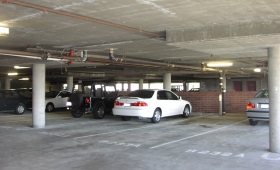
The inspection plan proposed by inspectionfacades.com is conducted in stages and gradually, step by step, from the recognition of the state of the parking spaces. For a recent parking lot, with no signs of abnormality, with a well-established maintenance program and unless otherwise specified by the owner, it is not considered essential to pass through a series of expensive tests immediately from the beginning. This, if the parking is in perfect condition visually and shows no indications of deficiencies. However, it is appropriate to screen with extensive laboratory analyses if there are problems that are visually apparent if the parking lot does not show a membrane repair program or regular cleaning or if it dates a number of years. For this reason a parking inspection plan program is offered in 3 parts. The first goal being to ensure the public’s and users’ safety, the fact remains that this should be part of a justified framework and to defend the interests of the client.
Part 1 of the parking garages inspection plan on a 5-year basis (visual inspection)
The initial parking inspection plan every 5 years, includes :
Part 2 of the parking garages inspection plan every 5 years (destructive test and analyses)
When Part 1 suggests abnormalities, Part 2 is requested by the engineer. This includes :
Part 3 of the parking garages inspection plan every 5 years (non-destructive testing) :
At this stage the doubts about problems are confirmed and it is necessary to have additional information to offer solutions to the problems. Part 3 includes :
DETAILED PARKING GARAGES INSPECTION REPORT CONTENT Bill 122 BY AN ENGINEER
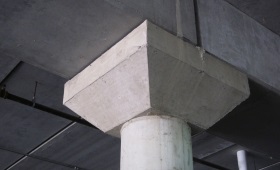
The methodology of the inspection report proposed by inspectionfacades.com and written by an engineer is comprehensive, professional and its contents are based upon proven standards. This methodology consists of 3 sections :
All of this in order to :
PRICES FOR REPAIRS AND MAINTENANCE OF PARKING GARAGES BILL 122

In a way Bill 122 does not come only to help public safety but also to help property owners recoup their investments by making them aware that it is preferable to adopt a parking space maintenance policy and thus avoiding the high costs of replacing parking spaces’ concrete slabs.
The replacement cost of a parking spaces’ slab of concrete in 2015, is on average $500-$750/m², including the driving aisles by calculating 40m² per parking space. So, it costs between $20-30K per parking space to replace a slab. Clearly, one wishes to avoid getting to that point. This amount does not take into account all the problems with ducts in the slab, such as: sprinklers, mechanical, electrical, drainage ducts and others. Some parking space slabs incorporate several ducts.
PRICE OF THE INSPECTION EVERY 5 YEARS OF THE PARKING GARAGE BY AN ENGINEER

For a client, asking an engineer to give him a price from the outset, for the :
It’s a bit like asking a medical doctor by telephone from the start how much it will cost to cure after just one single visit to the doctor’s office. This without having initiated the search for information to find out about the health condition of the patient: blood tests, x-rays, etc.
It’s the same thing in engineering. This is why inspectionfacades.com adopts a progressive step-by-step approach in 3 steps of inspection plans to meet the requirements of Bill 122 but also to protect as much as possible the customer’s economic interests. One begins therefore with step 1 and only if the engineer considers it necessary we move to step 2 for inspection and so on.
So, asking an engineer to provide a full price from the start could lead to that it is highly possible that the customer will pay too much for testing that he does not need or for the engineer who will not ask high enough fees for the complete inspection.
On the other hand, it is certain that it is easier and cheaper to have a long-term relationship with an engineer who was involved in the construction and monitoring of the work and who does continuous monitoring repeated every 5 years because he knows the file and the history of the condition of the parking garage well. For a new engineer in the file, it will take some time to become familiar with the parking space situation.
Inspectionfacades.com is the reference in explaining the inspection of the façades and parking facilities in Québec. Mr Daniel Dargis, engineer and general contractor, with over 30 years of experience as an engineer, general contractor, teacher and editor of articles in the explanation area of construction, directs this group. Owners of parking spaces will find at inspectionfacades.com complete professional services of façade and parking garage inspections in order to meet the requirements of Bill 122 and make their property investment more profitable.
Do not hesitate to contact us!

